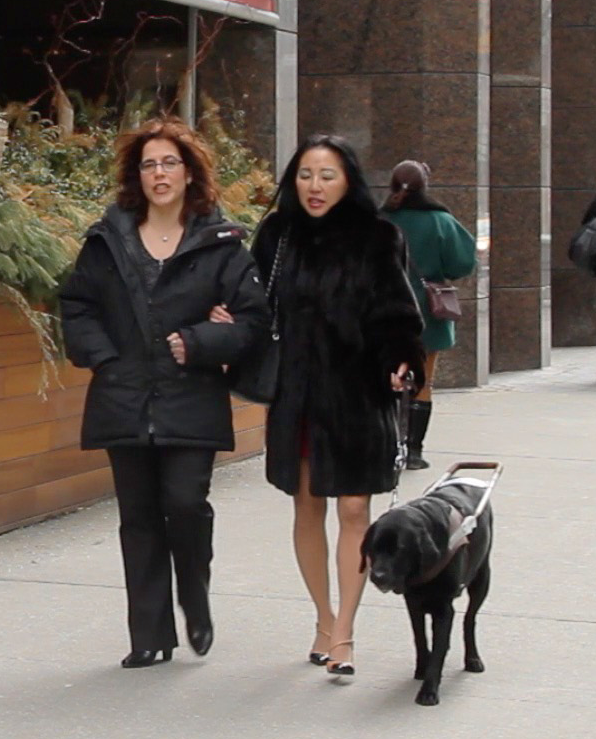People Who Use Service Animals
There are various types of service animals who support people with various types of disabilities.
- A person with vision loss may use a guide dog.
- Hearing alert animals help people with hearing loss.
- Other service animals are trained to alert a person to an oncoming seizure, or to assist people with autism, mental health disabilities, physical disabilities and other disabilities.
Under the Customer Service Standard, there are no restrictions on what type of animal can be used as a service animal.
An animal is considered a service animal if:
- you can easily identify it’s a service animal through visual indicators, such as when it wears a harness or vest, or
- the person with a disability provides documentation from a regulated health professional that confirms they need the service animal for reasons relating to their disability.
Defined as a member of one of the following: College of Audiologists and Speech-Language Pathologists of Ontario; College of Chiropractors of Ontario; College of Nurses of Ontario; College of Occupational Therapists of Ontario; College of Optometrists of Ontario; College of Physicians and Surgeons of Ontario; College of Physiotherapists of Ontario; College of Psychologists of Ontario
Tips:
- Don’t touch or distract a service animal. It’s not a pet, it’s a working animal and has to pay attention at all times.
- If you’re not sure if the animal is a pet or a service animal, ask your customer. You may ask to see their documentation from a regulated health professional.
- The customer is responsible for the care and supervision of their service animal. However, you can provide water for the animal if your customer requests it.
If another person’s health or safety could be seriously impacted by the presence of a service animal, such as a severe allergy:
Consider all options and try to find a solution that meets the needs of both people. For example:
- creating distance between the two people
- eliminating in-person contact
- changing the time the two receive service
- any other way that would allow the person to use their service animal on the premises
If you can’t easily identify that it’s a service animal:
- Don’t make assumptions. You can ask the person to provide documentation (such as a letter, note or form) from a regulated health professional that states that they require the animal because of their disability.
- If the person shows you the documentation, then they must be allowed to be accompanied by their service animal.
- The person is not required to disclose their disability or demonstrate how the animal assists them.


